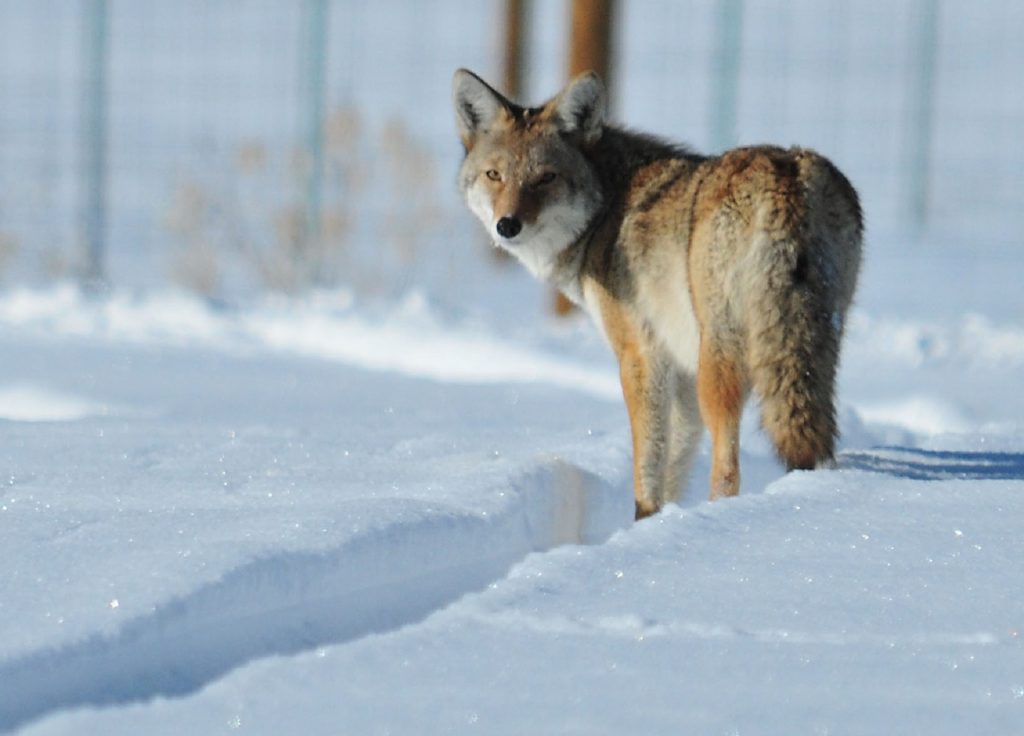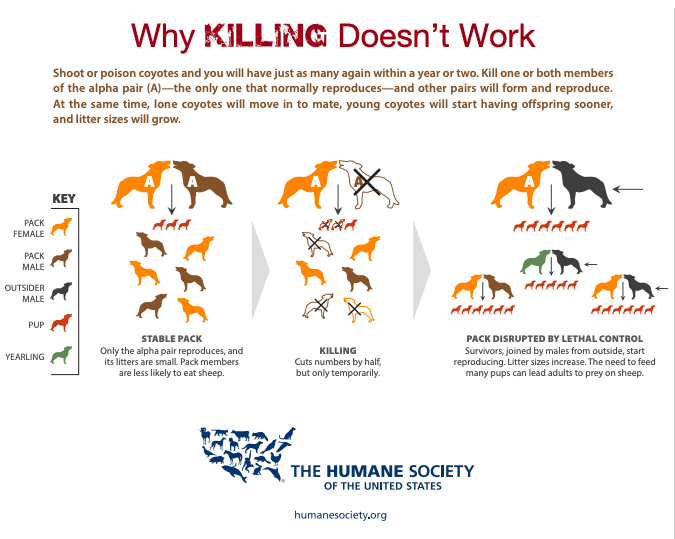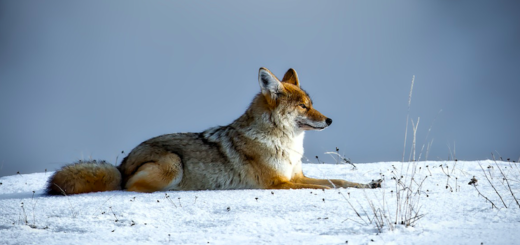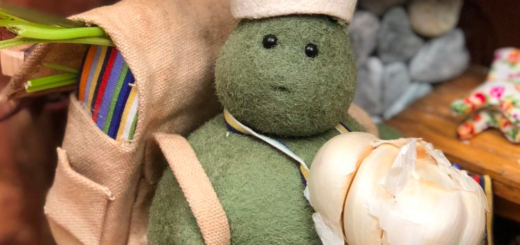Coyote Safety Tips: Your Guide to Coexisting with Coyotes

Whether you live in a bustling urban setting or a bucolic rural neighborhood, you’ve probably read about coyotes nearby, heard horror stories, or even had a sighting or two of your own.
But these intelligent wild dogs aren’t as fearsome as public opinion might lead to you believe. Fear and misinformation about these wild animals runs rampant.
Coyotes aren’t out to get us, but they are natural predators. We can peacefully coexist with them wherever we live, but it’s important to be educated on what drives their behavior, how to keep them away, and how to protect your cats, dogs, and other companion animals.
I spoke to coyote expert Dr. Chris Mowry of the Atlanta Coyote Project for coyote safety tips to live by and all the deets on these fascinating animals.
“The most common misconceptions are that coyotes are ravenous predators who eat everything in sight,” says Dr. Mowry. “In fact, coyotes are omnivores who have a very broad diet, including lots of fruits and insects.”
Coyotes are actually a lot like humans, Dr. Mowry explains. “Their family structure is just like ours (mom, dad, kids who eventually leave the nest), they eat a wide variety of foods, and they can live in a wide variety of habitats. They mate for life with a single partner and both parents are involved in rearing the young. They are very social animals who are quite devoted to their family. They will even carve out a portion of their territory and give to one of their kids if he/she is unable to find their own suitable territory. They communicate with one another by vocalizing and scent-marking and they can be very playful. They are very smart animals.”
Pretty amazing! And Mowry and his team have actually found that coyotes likely help to increase biodiversity, a crucial element for a healthy ecosystem.
So why so much fear and loathing around coyotes?
“This is due to misinformation and misunderstanding,” Dr. Mowry says. “Predators are a part of any healthy ecosystem and coyotes now serve as the apex predator in many parts of North America. Here in the southeast humans extirpated red wolves, which allowed the coyote to easily move in from the west and fill the void.”
“Coyotes are very secretive and really want nothing to do with humans,” he continues. “However, bad human behavior can lead to bad coyote behavior. Providing easy access to food in your trash or actually feeding coyotes will have many knock-on effects and eventually cause human-coyote conflict. In addition,”
There are plenty of natural food items on the landscape for coyotes to eat, but trouble starts when they have access to anthropogenic food resources like food waste and trash. Aside from the obvious detriment that this can increase littering, this causes coyotes to lose their innate fear of civilization. “Once their innate fears are gone unsupervised pets are usually the first casualty.”
So how can you peacefully coexist with coyotes? There are a few key coyote safety tips to follow.
- Don’t feed coyotes and make sure you prevent any access to food that would attract them or their prey. Don’t leave pet food outside and secure all trash against coyotes and their prey animals.
- Try to keep small mammals (like squirrels, raccoons, and rats) away from your property. Their presence can attract coyotes. Use pest control services such as https://www.pestcontrolexperts.com/local/california/ if need be.
- Clean grills of any food residue and put them away when not in use.
- Securely dispose of any dead animals such as roadkill. Coyotes are not picky eaters and will go for this food source.
- Don’t let your pets go outdoors alone and bring them in at night so that they are not hunted by starved coyotes.
- If you need to keep your pets outside, put in fencing and motion sensor lights to keep predators away.
- Keep any outdoor animals (chickens, goats, etc.) in enclosures or secure areas.
- If you see coyotes nearby, haze them. That means scaring them with loud noises, waving your arms, throwing objects towards them (not at them), and/or spraying a hose.
The below graphic from The Humane Society of the United States explains in detail while killing coyotes doesn’t work.

Here are some other key facts about coyotes:
- They almost never attack humans. You’re more likely to be killed by a golf ball or champagne cork than bitten by a coyote.
- Rabies in coyotes is extremely rare. In 2010 the U.S. Centers for Disease Control and Prevention (CDC) reported only 10 cases of rabies in coyotes nationwide (there are hundreds of thousand of coyotes in the U.S. alone).
- Trapping or relocating coyotes isn’t an effective deterrent. Killing them doesn’t work, either. When a coyote is removed, a transient coyote will likely step in and take its place. In addition, removing one or more coyotes leaves more food available for the remaining residents, which encourages more pups and increases the size of the local population.
- Sadly, the U.S. government kills thousands of coyotes every year in order to protect animals being raised for food. In 2017 alone they slaughtered 69,041 of these intelligent wild dogs. (When we choose to eat plant-based foods instead of meat, dairy, and eggs, we save the lives of farm animals and wild animals like coyotes.)
All in all, coyotes are more misunderstood than anything else. When dealing with any wild animal, it’s important to use common sense, be cautious, and give them the space and respect they deserve.
As the Atlanta Coyote Project says: “Understanding coyote behavior and being proactive can prevent conflict from developing or escalating.” Memorize the above coyote safety tips and you’ll help to create a safer, more compassionate world for you, your pets, and our beautiful coyote friends.
For more information about coyotes, visit the AtlantaCoyoteProject.org.
Follow harm.less on Instagram, Twitter, and Facebook for conscious, cruelty-free food, travel, shopping, and above all: FUN. 🦄 And subscribe to our email list here. (Use the hashtag #harmlesswithhannah for the chance to be featured!)

















I went out one morning to get in my car and here was a coyote walking down the middle of the street like he owned it. He looked at me as he passed my drive then disappeared on up the street.
I once worked for the National Park Service at Stones River National Battlefield and Cemetery. One year a coyote moved into the park. It was a female and one of the part’s neighbors had a huge German Shepard. The mated and the next spring we had “Coydogs” all over the place. A troop of soldiers were running around the park road early one morning and all of a sudden here they came back towards me and said there were wolves on the road up ahead. I walked my dog every morning and one morning the coyote followed us about 30 feet behind us. My dog kept turning around and watching her, but she kept her head and tail down in a non-threatening posture. She was going to a trail that took her to another neighbor’s property and the neighbor raised pumpkins and watermelons. Those Coydogs would ransack her garden, eating all the pumpkins and watermelons they could. The lady thought they were cute and would sit on her front porch and watch them. The Coydogs were so big that any of them would have been a handful for a grown man, and the whole pack could have easily taken down one or even two people. Since the people coming to the park included kids, the coyote and the Coydogs were removed humanely in the interest of safety and moved up into the mountains..
We have coyotes all around us. My dog, a Karelian Bear Dog has chased them off from our house, but he is trained to only go so far and then comes home. He once tried to play with a young coyote but it did not know how to react. It jumped towards Koda and as trained, Koda jumped back. Koda just wants to play and not attack them. We had one at the bottom of our deck steps and Koda stayed on the deck just barking at it. Bear Dogs are very quick on their feet and that is why they chase bears, but not to attack them.
First of all thank you for your information. A couple of years ago we saw a coyote walking down the middle of the street in the middle of the day. That was kind of shocking , but we’ve figured it’s because their habitat is being taken away from them.